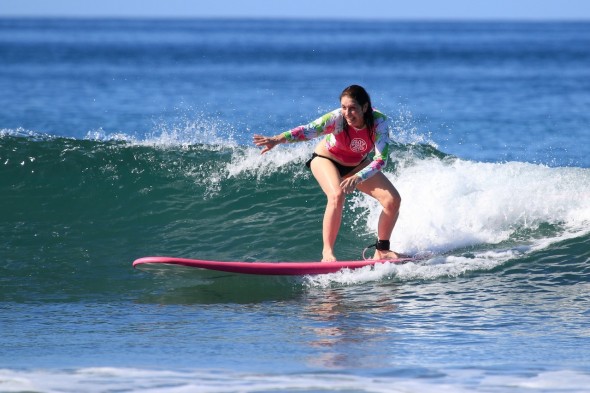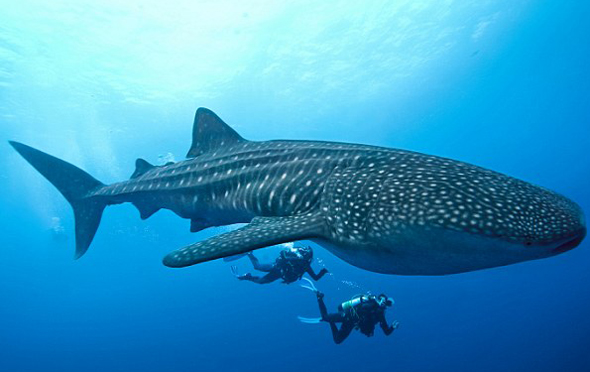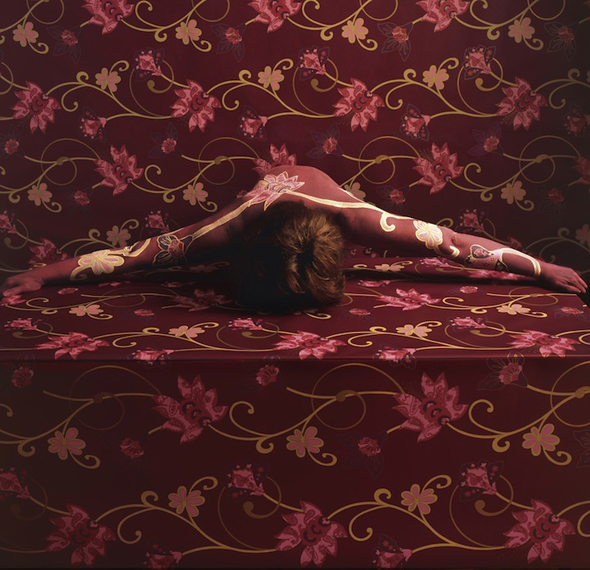 Name: Cecilia Paredes
Name: Cecilia Paredes
Where do you live? I live between Philadelphia PA in the US, San Jose, Costa Rica and Lima, Peru.
What is your main artistic practice?
My main artistic practice is performance, sculpture, photography, installation and drawing, not necessarily in that order.
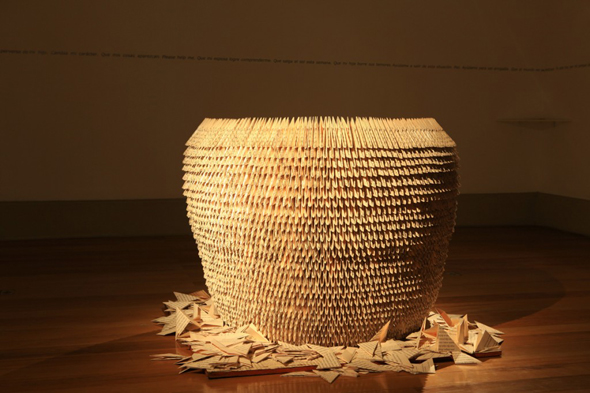
Tell us about a project that brought you to Costa Rica.
I have lived in Costa Rica for 24 years, coming from Rome, Italy with my family.
Then as I got really attached and in love with CR, I began to develop my work there. I consider CR my second home in many aspects
What are you working on?
I am currently working a mural for a project with curator Octavio Zaya from NY.
Where can we find your work?
www.ceciliaparedes.net

Blog
The Beautiful World of Cecilia Paredes
Wash Don’t Dry
 Most dry cleaners use the toxic chemical perchloroethylene—also known as tetrachloroethylene—to clean clothes. Classified as a hazardous air contaminant by the EPA, perc can also contaminate drinking water when it gets into the water table and has been identified as cancer-causing by the International Agency for Research on Cancer, among other organizations.
Most dry cleaners use the toxic chemical perchloroethylene—also known as tetrachloroethylene—to clean clothes. Classified as a hazardous air contaminant by the EPA, perc can also contaminate drinking water when it gets into the water table and has been identified as cancer-causing by the International Agency for Research on Cancer, among other organizations.
Perc has also been linked to skin irritations, which is great to know when you break out in a gnarly rash after wearing your freshly-cleaned shirt.
Many fabrics can be hand-washed in cold water and air-dried rather than dry cleaned. If you have to go dry, look for “environmentally friendly” cleaners that use non-toxic soaps instead of chemicals to clean clothes; this process is sometimes known as “wet” or “steam” cleaning. Finally, if you can, opt out of the plastic bag—or at least bring it back to for the cleaner to recycle.
Guiones Surf Photo of the Week
Sheer Exuberance! Untainted by the sometime arrogance of the highly skilled…Why do some of the most gifted Surfers become jaded, even demeaning, losing sight of the larger, elemental beauty at hand? We can commune. We can evolve. But why then condescend? Who is the Best Surfer in the Water? The One having the Most Fun!
photo provided by Surfing Nosara
Central Creatives: Photographs from Kathryn Gaitens
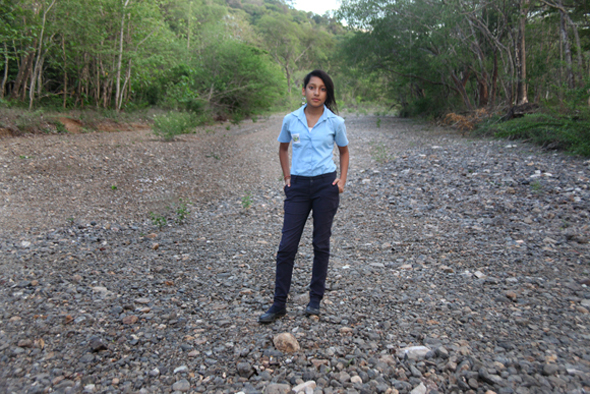 This week we were able to catch up with Nosara photographer Kathryn Gaitens, whose thoughtful work explores a range of subjects and style.
This week we were able to catch up with Nosara photographer Kathryn Gaitens, whose thoughtful work explores a range of subjects and style.
Name: Kathryn Gaitens
Where do you live? I divide my time between Costa Rica and Toronto, Canada.
What is your main artistic practice?
Contemporary portraiture: expressions of beauty with layers of meaning. The majority of my projects are editorial with a focus on people, portraits and fashion. I love the challenge of editorial projects which are deadline-oriented in nature. I thrive artistically and creatively when I have to capture a moment, a person, under pressure. Personal projects, however, allow me to slow down and be in the moment.
Tell us about a project that brought you to Central America
I have been coming to Costa Rica for many years and have always been drawn to the unique and surreal beauty of the land and the locals. The stories and spirits of the people I have been fortunate enough to cross paths with throughout my adventures have inspired various projects of mine.
One of my projects seeks to capture the passion and tireless effort of the entrepreneurially spirited women of Costa Rica. One woman, Dona Claudia, has been raising and selling chicken eggs for over forty years to provide for her family (below). Another woman, Jessica, is a student I photographed in the dry river bed she crosses, in the rainy season when the river comes up to her chest (above). She needs to wake up at at 4:30am to walk an hour to the bus that leaves for school at 6am.
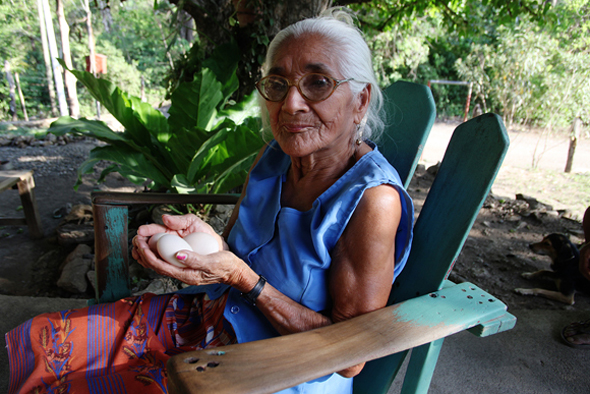

Another personal project of mine was inspired by the amazing waves and free-spirited surfers I’ve met on the beaches of Costa Rica. Whether walking along the beach or through the village, the light here is always beautiful and that in itself is an inspiring way to start shooting.

Where can we find your work?
My personal website: www.gaitensphoto.com
What are you working on next?
There are a few projects on the horizon. I am excited to continue a series of First Nations portraits born from a commission for the Smithsonian National Museum of the American Indian.
Make Sweets Fair Trade
 Shopping for Valentine’s Day sweets? Here’s the dirty little secret behind mass-produced candy: As many as 200,000 children work the cocoa fields of Africa’s Ivory Coast, many against their will. On the sugar side, massive amounts of herbicides and pesticides are routinely sprayed on sugar cane crops, which are burned after harvest, leading to ground, water and air pollution.
Shopping for Valentine’s Day sweets? Here’s the dirty little secret behind mass-produced candy: As many as 200,000 children work the cocoa fields of Africa’s Ivory Coast, many against their will. On the sugar side, massive amounts of herbicides and pesticides are routinely sprayed on sugar cane crops, which are burned after harvest, leading to ground, water and air pollution.
Slave-labor chocolate and pesticide-laden sugar. That’s kind of a bitter pill, isn’t it?
Thankfully, fair trade certified cacao and sugar are slowly but surely making their way into our markets. But what does fair trade really mean? In a nutshell: The manufacturers of fair trade sugar, chocolate and other products typically work in third-world countries to forge economic partnerships that can alleviate poverty, reduce inequality, and create opportunities for farmers and artists—especially women, who produce 76% of fair trade goods. These businesses combat human trafficking by creating opportunities for parents, so that they don’t resort to selling their children or their children’s labor.
Especially when you’re choosing candy to show your love, supporting this kind of business can be sweet, indeed.
Guiones Surf Photo of the Week
Over in seconds, our dance with any given wave is intense but brief. How often have we watched the Pelicans dip and skirt, between wave after wave, wingtips on water, the length of our visible coastline? How far is their transit? How large their wave count?
photo provide by Surfing Nosara
WildLifeRisk Exposes Mass Whale Slaughter in China
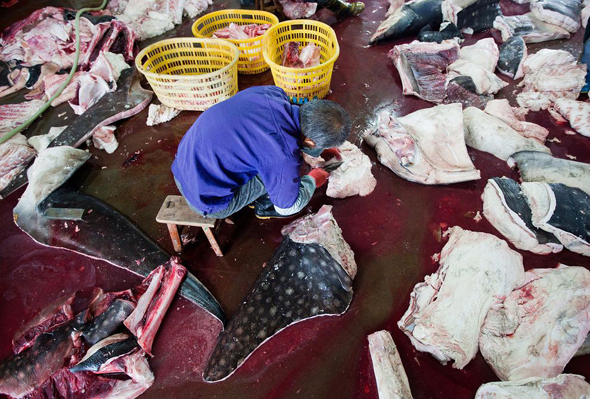
Last week WildLifeRisk, an endangered species conservation group based in Hong Kong, released a deeply upsetting video as part of their investigation on the mass slaughtering of whale sharks in China. Though there has long been discussion and concern about how recent obsession with fish oil within the cosmetic industry is affecting endangered sharks, the reveal of both the conditions in which the oil is being processed, and the numbers by which they are being caught begs undeniable questions about the inevitable diminishing whale shark population.
Whale sharks are the biggest fish in the world and can grow up to 12 meters long, or roughly the size of the bus. These gentle creatures are being sold at ports for $31,000, largely due to their liver oil and skin. Three species of sharks, including the basking and great white sharks, require special hunting permits from the government. And yet, what WildLifeRisk activists found in a factory in the Zhejiang Province on China’s eastern seaboard shocked and sickened them. Their report, titled “Planet’s biggest slaughter of whale sharks exposed in Pu Qi, Zhejiang Province, China” confirms that in one factory alone nearly 600 sharks are being slaughtered annually.
While I resist sounding dramatic, I cannot stop thinking about this two and a half minute video. My initial feelings were akin to what I felt in high school when reading Upton Sinclair’s The Jungle. Regardless of your feelings about fish oil, meat, or sharks in particular, chances are you may share an inherent horror when confronted with the hand carving of these massive animals on a bloody and flesh ridden concrete floor. That our desire for a product should override our integrity regarding endangered animals and the circumstances in which we ask people to manufacture them, is problematic. We share the responsibility of a serious misstep in accountability and responsibility, to put it most simply, we should know better. Read more about how you can support WildLifeRisk on their website.
(Due to its graphic nature please use discretion when viewing the WildLifeRisk piece below.)
TEOR/éTica: a Space for Art and Thought
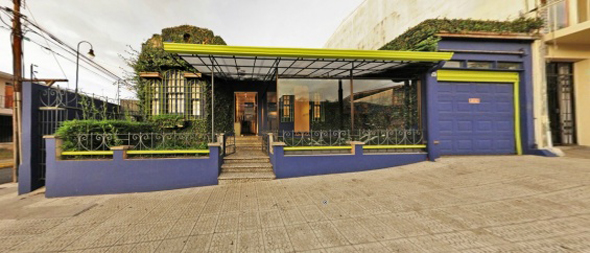
While trying to familiarize myself with the artist community in Costa Rica, research led me to discover TEOR/éTica, a sure stop on my next trip to San José. TEOR/éTica is a private, non-profit independent project in San Jose, dedicated to contemporary artistic and curatorial practices. What does that mean, exactly? Rather than describing themselves solely as a gallery or museum, the leaders at TEOR/éTica are devoted to encouraging an active art center for documenting and investigating current working artists, with an emphasis on theory, ethics, and aesthetics.
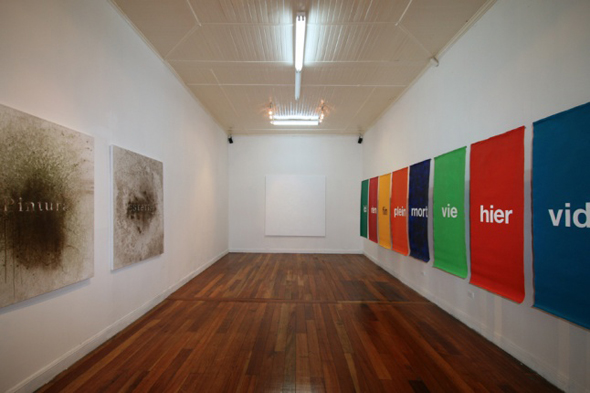
TEOR/éTica operates in four main areas: exhibitions of local and international artists; promotion, documentation of work and support for Central American artists of various disciplines, an editorial project with over forty publications, and organizing and hosting talks, symposia and artistic residencies. The museum area acts as an opportunity to present art of the region to visitors of San Jose while functioning as a complement to their own program. The library, holds unique titles on contemporary art from Central America, as well as over 2000 titles exploring ideas about artistic practices, art history, theory and popular culture.
For the past decade TEOR/éTica has established itself as one of the most purposeful cultural projects in Costa Rica. Programs are held in high regard, with international interest and acknowledgement as an organization that generates new thought and conversation. Next week TEOR/éTica will host activities during the February 12th Art City Tour, San José’s hippest gallery crawl event yet. Read more on their website: http://www.teoretica.org/.

